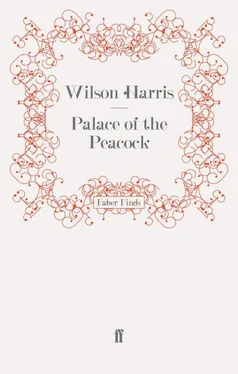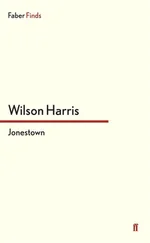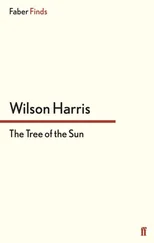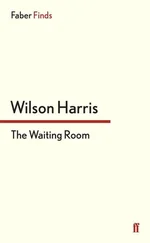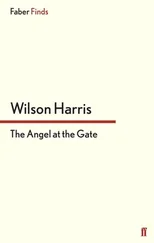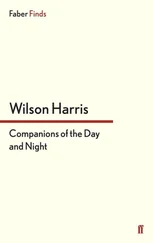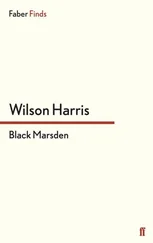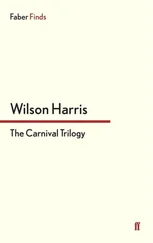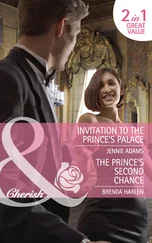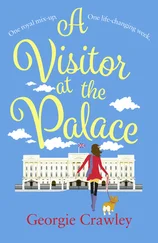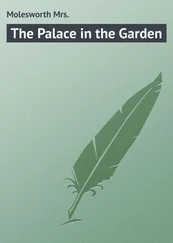Wilson Harris - Palace of the Peacock
Здесь есть возможность читать онлайн «Wilson Harris - Palace of the Peacock» весь текст электронной книги совершенно бесплатно (целиком полную версию без сокращений). В некоторых случаях можно слушать аудио, скачать через торрент в формате fb2 и присутствует краткое содержание. Год выпуска: 2013, Издательство: Faber Finds, Жанр: Современная проза, на английском языке. Описание произведения, (предисловие) а так же отзывы посетителей доступны на портале библиотеки ЛибКат.
- Название:Palace of the Peacock
- Автор:
- Издательство:Faber Finds
- Жанр:
- Год:2013
- ISBN:нет данных
- Рейтинг книги:5 / 5. Голосов: 1
-
Избранное:Добавить в избранное
- Отзывы:
-
Ваша оценка:
- 100
- 1
- 2
- 3
- 4
- 5
Palace of the Peacock: краткое содержание, описание и аннотация
Предлагаем к чтению аннотацию, описание, краткое содержание или предисловие (зависит от того, что написал сам автор книги «Palace of the Peacock»). Если вы не нашли необходимую информацию о книге — напишите в комментариях, мы постараемся отыскать её.
Palace of the Peacock — читать онлайн бесплатно полную книгу (весь текст) целиком
Ниже представлен текст книги, разбитый по страницам. Система сохранения места последней прочитанной страницы, позволяет с удобством читать онлайн бесплатно книгу «Palace of the Peacock», без необходимости каждый раз заново искать на чём Вы остановились. Поставьте закладку, и сможете в любой момент перейти на страницу, на которой закончили чтение.
Интервал:
Закладка:
Wilson Harris
Palace of the Peacock
For Margaret, Nigel and Sydney
It ceases to be history and becomes… fabricated for pleasure, as moderns say, but I say by Inspiration.
William BlakeAnd after the earthquake a fire; but the Lord was not in the fire: and after the fire a still small voice.
I Kings 19: 12AUTHOR’S NOTE
This is my second Note or short preface to Palace of the Peacock. My first was actually an amendment in 1988 to a Note on the Genesis of the Guyana Quartet, when the four novels constituting the Quartet (of which Palace is the first) were collected and issued in one volume in 1985.
Kenneth Ramchand, the Caribbean scholar, wrote an introductory piece to the first paperback edition of Palace in 1968.
It is useful now, I think, as the 1990s draw to a close, to bring into some relief certain features in Palace which respond to a creative ferment that has been happening in the Americas since 1960 when the novel first appeared.
That ferment is curiously relevant, I find, to the body of fiction I have written through The Guyana Quartet and succeeding novels up to the latest, Jonestown.
Critics now see Palace within a context of “magical realist” fiction and therefore relevant, across the years, to an innovative tradition that has become fashionable, though scarcely articulated or considered in 1960.
Of note also is a new emphasis on variants of “music” in prose and poetry. It is arguable that this is nothing new (when one reflects, for instance, on the Harlem renaissance earlier in this century) but the innovative daring of distinguished black American poets — who are the recipients of notable prizes — became sharper within the present decade and in the 1980s.
In tandem with all this is a remarkable and phenomenal upsurge of interest in pre-Columbian cultures, arts, civilizations, and the parallel resources these offer to visualizations of architectures of tradition long vanished or eclipsed.
Much more could be said of this ferment, and the field of consciousness it embraces, but I shall restrict this Note to the particular variant of “music” (possibly original) in Palace.
I speak of music — the “spirit-bone” of the Caribs which may be associated with South American rivers — in the prefatory Note I wrote to the Quartet in the mid-1980s but I am better placed now to outline the specificity inherent to such rhythm. The seed of the Carib bone-flute constitutes an evolving tone which is pertinent to the entire body of fiction I have written. There is no straightforward metaphor that mirrors this evolution but in my mind it corresponds to a paradoxical veil or density in the ancient “bone-spirit” which falls upon invisibles in space and makes them visible. I shall give an illustration of this shortly.
But first it is necessary to outline, as succinctly as I can, the archetypal ground and numinosity of tradition infusing, so to speak, the bone-spirit or bone-flute. The latter is the uncanny termination of a bridge of rhythm arcing or curving from pre-Columbian Mexico into the pre-Columbian and post-Columbian Guianas in South America. At the ancient Mexican origin or genesis of the bridge is the apparition of Quetzalcoatl (quetzal, the heavenly bird, coatl, the wise serpent). The bird-wing of the bridge flies in space, half-seen within the rhythms of space, partially unseen. The scale of the serpent orchestrates minutiae of soil and rain which fill crevices in the body of the earth, river beds, caves, oceans. The serpent is tidal, it is oceanic, it is terrestrial.
Further along the bridge looms Kukulcan, the obscure ancestor of migrating species. He is also an androgynous incorporation of the womb. Man is born of woman and, in shamanic legend, woman of man.
Next arises Huracan or Hurricane who shakes the bridge to its foundations and demolishes worlds. Hurricane subsides into the bone-flute of Yurokon, the eternal child. Yurokon is the termination of the history or storyline of the bridge in the Guianas.
Yurokon’s mother is sometimes identified with muses or furies who have suffered abuse at the hand of the Caribs.
Yurokon is Quetzalcoatl’s cousin. His Guianese parents are the doomed Caribs. His veil arises from a cauldron in which the Caribs cook a morsel of flesh stripped from the bone of the conquistador or invader. Yurokon therefore coincides with the Spanish and European conquest of the Central and South Americas. The ritual consumption of a morsel of flesh plucked from the enemy plants knowledge of the invader’s plans and intentions. The Caribs were doomed though they fought fiercely. Thus Yurokon is the birth of bitter self-knowledge and extremity. The evil of conquest in the invader smarts and exacerbates a sensation of mutual horror in the Carib spirit which entertains an identical lust for triumphal victory.
The accent upon a terminal moment in the history of an age, in the bone-spirit, creates a cloak of uncertainties about the consequences of change; and the need to transgress certain frames becomes a native universal theme or implicit legacy. This is the music of time within clustering imageries upon the bone-flute.
Donne dies many deaths in Palace of the Peacock. He relives the terminal moment of history in the uncertainty of his own demise as portrayed and re-enacted by his nameless twin brother who dreams him back to life, life becomes a relived, terminal, but paradoxically regained threshold into rhythmic space or nuclear turning point between times past, present and future. Such is the trial and rebirth of community, encompassing intimate strangers, in the Dream of space time, intimate re-visionary invader, intimate re-visionary invaded, native host, twin-ships, twin-bridges, lost cities that vanish to reappear within the elements, muses, furies.
I must confess I have been haunted since childhood in British Guiana, South America, where I was born, by vanished cultures and places and kingdoms. One such legendary kingdom was ancient El Dorado. No one to my knowledge has seen El Dorado. It seems to move and transplant itself within the great rain forests that lie between the Amazon and the Orinoco. Sir Walter Ralegh failed to find it in his last voyage into the Orinoco in the early seventeenth century. As a consequence he lost his head in the Tower when he returned to London.
When one visualizes Ralegh against the backcloth of bone-spirit bridge his death is another echoing passage into relived termini (which Donne endures) and re-visionary cross-cultural medium between the Americas and Europe.
The story line of his narrow expedition is fractured into the prism of far-flung voyages …
My own expeditions as a land and hydrographic surveyor in the 1940s and 50s led me to intuit rhythms to riverscapes, landscapes, skyscapes which exposed an apparition and magical palace within changed and changing bridges of time.
El Dorado possesses its archetypal equation between place and placelessness, in orchestrated elements, wind, fire, earth, water. Such orchestration implies the arousal of hidden worlds, the Word of creations in the bone or skeleton of cities to be relived again within architectures of time. El Dorado is fabulous but it is not only a legend of relived memory and the City of God one seeks everywhere. It is a grave and bloodstained canvas of greed for gold and territory across centuries.
At the very outset of Palace of the Peacock, Donne is envisioned — in the tradition I have sought to outline — as dying more than one death, experiencing more than one terminal moment in history. Did he die on the gallows? Was he shot by the fury Mariella (the woman he abused)? Later it is suggested he was drowned. Three deaths at the hand of muses or furies of place and time revisited by his nameless twin brother who dreams him back to life …
Читать дальшеИнтервал:
Закладка:
Похожие книги на «Palace of the Peacock»
Представляем Вашему вниманию похожие книги на «Palace of the Peacock» списком для выбора. Мы отобрали схожую по названию и смыслу литературу в надежде предоставить читателям больше вариантов отыскать новые, интересные, ещё непрочитанные произведения.
Обсуждение, отзывы о книге «Palace of the Peacock» и просто собственные мнения читателей. Оставьте ваши комментарии, напишите, что Вы думаете о произведении, его смысле или главных героях. Укажите что конкретно понравилось, а что нет, и почему Вы так считаете.
